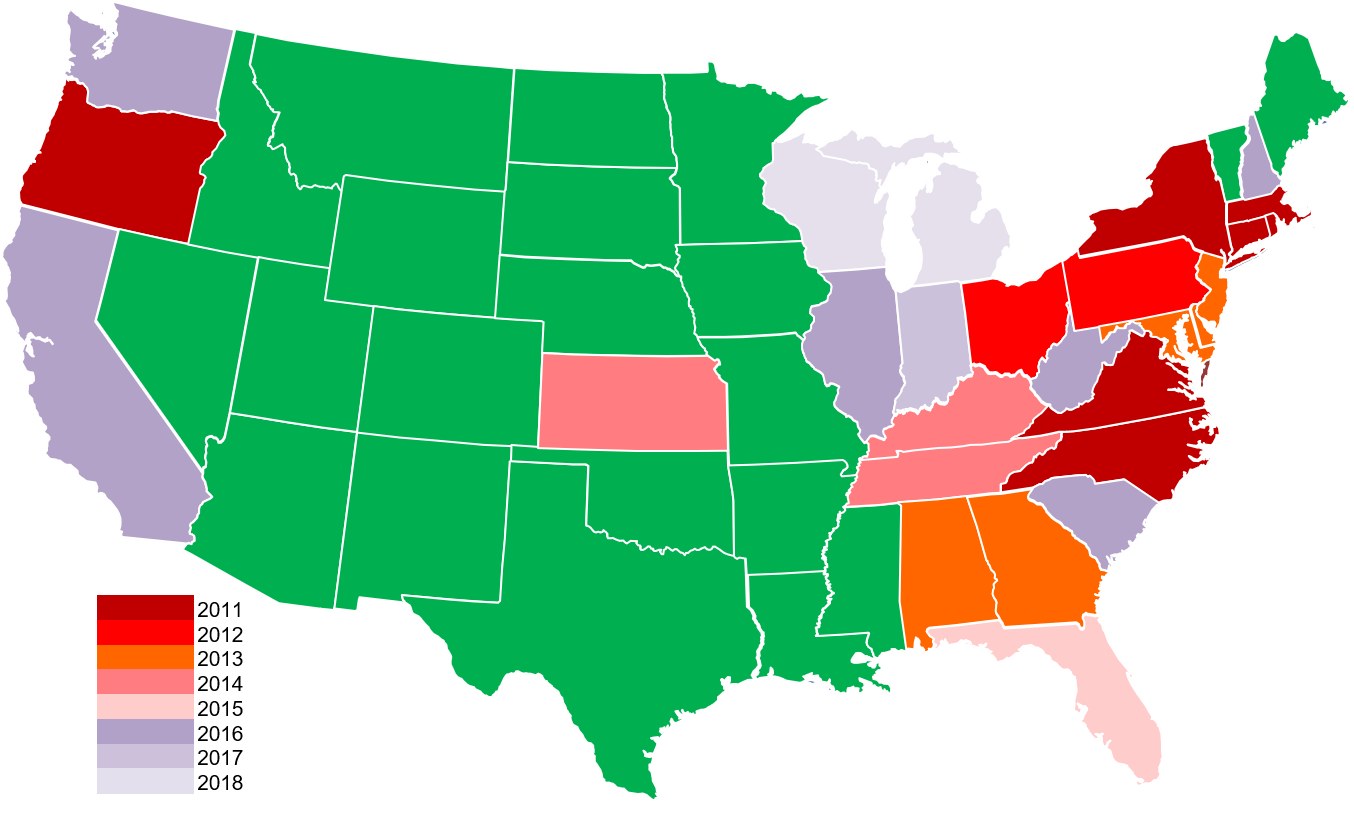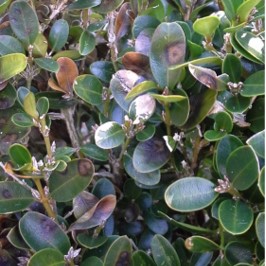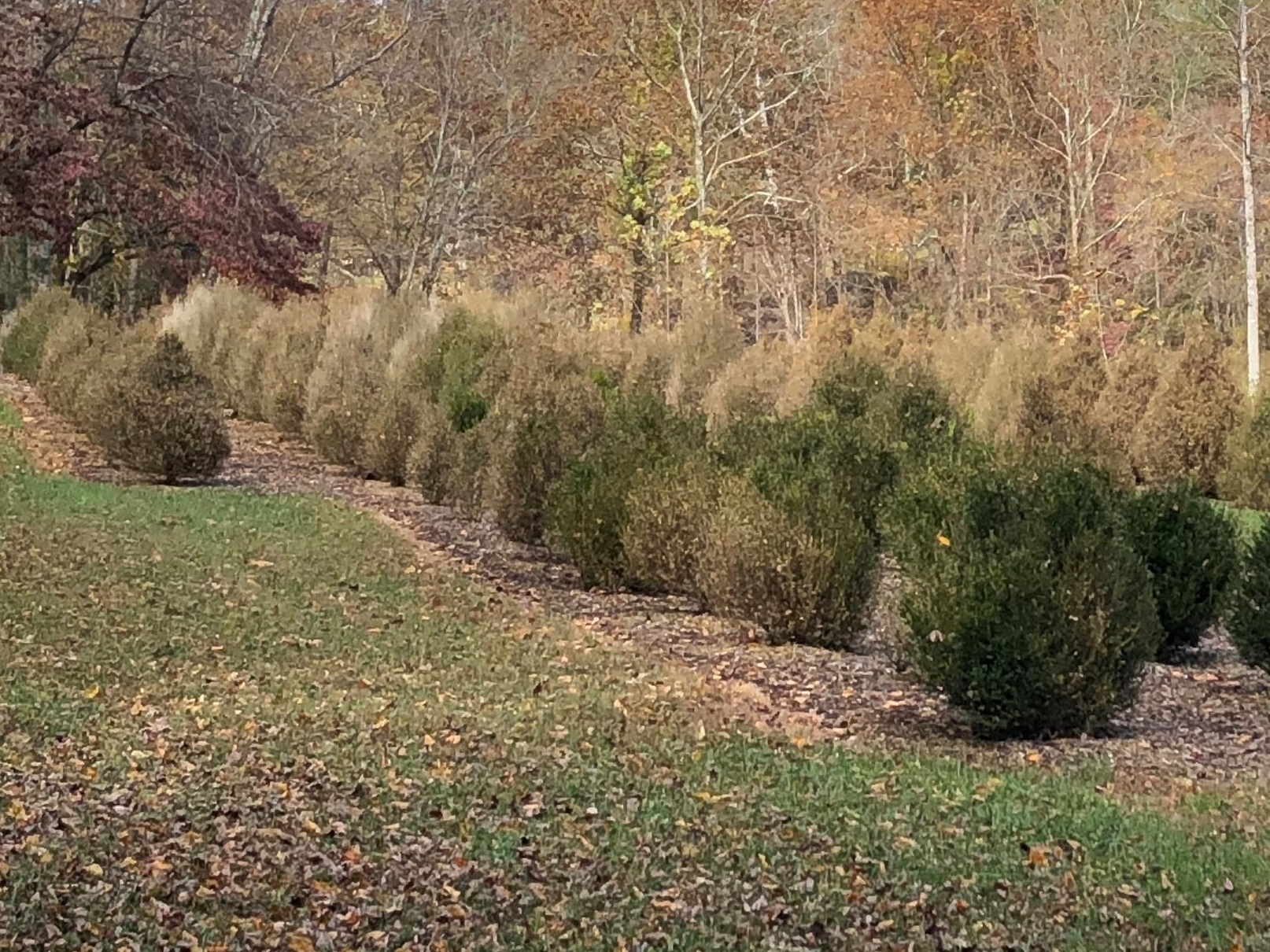By: Dr. Keith Yoder - Retired Plant Pathologist, Virginia Tech
Following the severe boxwood blight year in the Mid-Atlantic region in 2018, nursery growers and landscape care professionals should diligently follow prescribed Best Management Practices (BMPs) as a first line of defense to avoid introducing the boxwood blight fungus or, where blight is already present, to manage it most effectively while reducing the risk of spreading it to new locations.
Fungicides are an essential part of the BMPs. They protect boxwood and reduce the spread of blight by preventing germination and infection by the fungal spores. Examples of protectant fungicides listed in the Virginia Tech Nursery crops Pest Management Guide (PMG, page 5-7) are chlorothalonil (Daconil Weather Stik, 1.4 pt/100 gal) and mancozeb (Dithane 75DF Rainshield 1.5 lb/100 gal). Some fungicides are locally systemic (within the leaf) and offer specific modes of action. Recommended examples, also listed in the PMG, include fludioxonil (Medallion WDG2-4 oz/100 gal), thiophanate-methyl (Cleary 3336 WP 1.5 lb/100 gal), boscalid + pyraclostrobin (Pageant 12-18 oz/100 gal), and tebuconazole (Torque 10 fl oz/100 gal). Because the systemic classes of fungicides tend to be at risk for development of resistance, it is generally recommended (and often specified on the label) that they should be alternated and tank-mixed with broad-spectrum protectant fungicides such as chlorothalonil or mancozeb. Spectro 90WDG (1.5 lb/100 gal) is a combination product that contains both chlorothalonil and thiophanate-methyl. The above list is provided as recommended examples. We feel these can be blended into an effective season-long program, but this list is not meant to exclude similarly labeled formulations and other effective products.
In practice, a rotational schedule of very effective fungicides containing both protectants and systemic products that would have minimal chance of developing resistance might look something like this:
Week 1: Chlorothalonil (Daconil Weather Stik, 1.4 pt/100 gal).
Week 3: Mancozeb (Dithane 75DF Rainshield 1.5 lb/100 gal) + Tebuconazole (Torque 10 fl oz/100 gal).
Week 5: Chlorothalonil (Daconil Weather Stik, 1.4 pt/100 gal).
Week 7: Mancozeb (Dithane 75DF Rainshield 1.5 lb/100 gal). + Pyraclostrobin (Insignia 8-16 oz/100 gal).
Week 9: Start back with the Week 1 rotation. If need be, there are other classes of systemic fungicides that could be substituted into the rotation.
Fungicide applications should begin in the spring when conditions become favorable for infection: Infection periods occur at temperatures of 60-77°F with extended wetting and high humidity. The residual activity of fungicides is affected by amount of rainfall, weathering and degradation, and must be reapplied at regular intervals while the risk of blight infection is present. However, they must not be applied more frequently than recommended treatment intervals, or applied in excess of rates specified on the product label. Always read and follow product labels for safety instructions regarding mixing, handling, compatibility with other chemicals, application methods, re-entry intervals and limitations on amounts of product per acre per year.
Because blight spores can stick to tools, equipment, spray hoses, etc., sanitize all equipment, shoes, gloves, etc., used in tending and treating boxwood to prevent spread of fungal inoculum to healthy plantings. For a list of sanitizer recommendations, refer to the Boxwood Blight Task Force website. It is recommended that vehicles that may have been exposed to the boxwood blight fungus be thoroughly washed of debris (e.g. cleaned at a carwash) to avoid spreading the fungus from one planting to another.
A note about spray equipment: At Saunders Brothers we spray our nursery blocks with an “air-assisted” sprayer (pictured above). We chose this sprayer and like it because it gives good penetration of the spray by spraying straight down into the plants. Many airblast sprayers are characterized by the strong sideways airflow, which could blow detached leaves and plant debris from row to row, possibly spreading disease.
To be noted: While Saunders Genetics has worked with nursery growers who have successfully used the pesticides listed above, we make no guarantees or promises, nor express any opinions, concerning the effectiveness or safety of these or any other pesticides. Always read the labels and other product information from the manufacturer and discuss the proper use and application of products with appropriate company representatives or acknowledged experts.


















